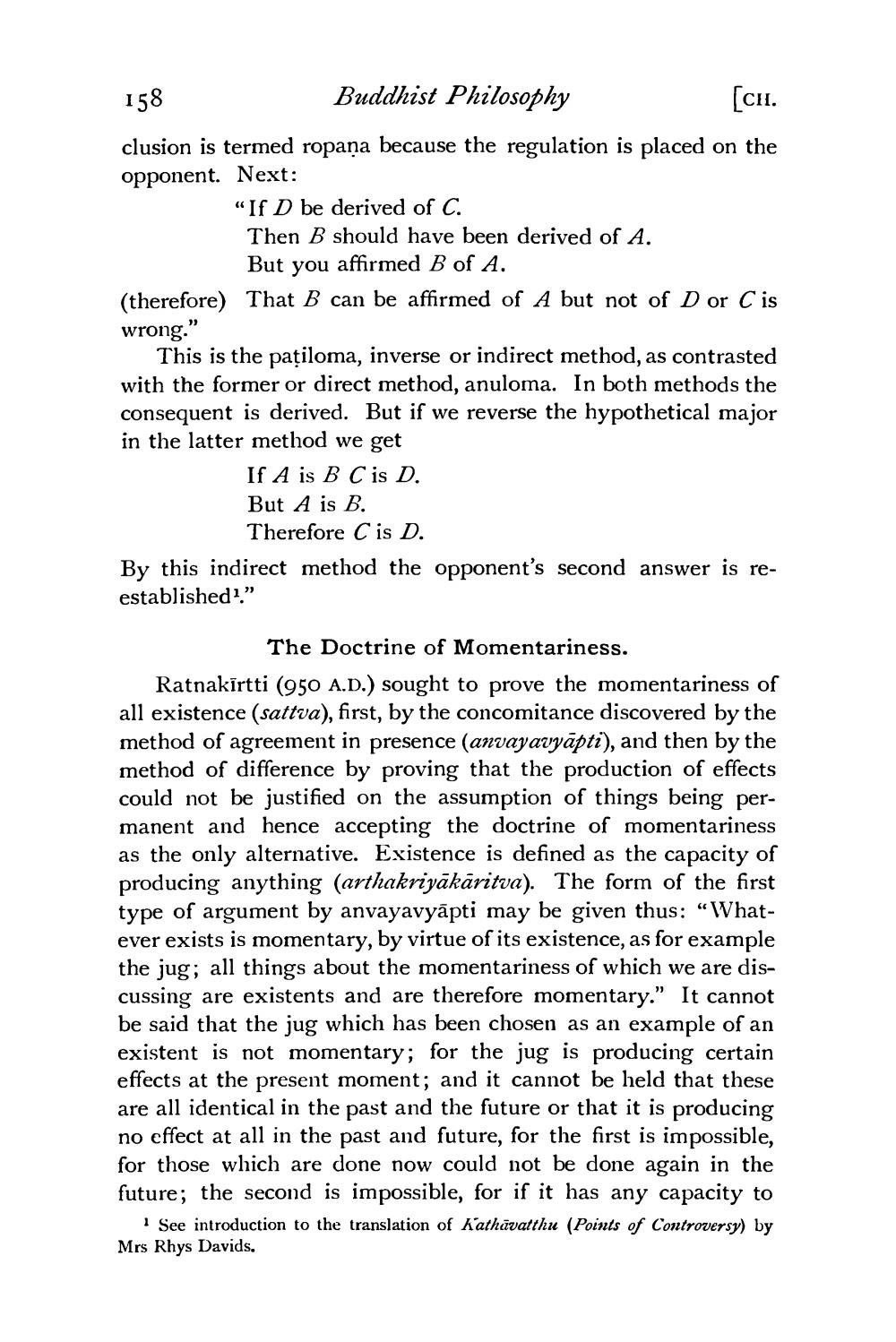________________
158
Buddhist Philosophy
[ch.
clusion is termed ropana because the regulation is placed on the opponent. Next:
"If D be derived of C. Then B should have been derived of A.
But you affirmed B of A. (therefore) That B can be affirmed of A but not of D or C is wrong."
This is the pațiloma, inverse or indirect method, as contrasted with the former or direct method, anuloma. In both methods the consequent is derived. But if we reverse the hypothetical major in the latter method we get
If A is B C is D. But A is B.
Therefore C is D. By this indirect method the opponent's second answer is reestablished?.”
The Doctrine of Momentariness. Ratnakīrtti (950 A.D.) sought to prove the momentariness of all existence (sattva), first, by the concomitance discovered by the method of agreement in presence (anvayavyāpti), and then by the method of difference by proving that the production of effects could not be justified on the assumption of things being permanent and hence accepting the doctrine of momentariness as the only alternative. Existence is defined as the capacity of producing anything (arthakriyākāritva). The form of the first type of argument by anvayavyāpti may be given thus: “Whatever exists is momentary, by virtue of its existence, as for example the jug; all things about the momentariness of which we are discussing are existents and are therefore momentary.” It cannot be said that the jug which has been chosen as an example of an existent is not momentary; for the jug is producing certain effects at the present moment; and it cannot be held that these are all identical in the past and the future or that it is producing no effect at all in the past and future, for the first is impossible, for those which are done now could not be done again in the future; the second is impossible, for if it has any capacity to
See introduction to the translation of kathāvatthu (Points of Controversy) by Mrs Rhys Davids.




